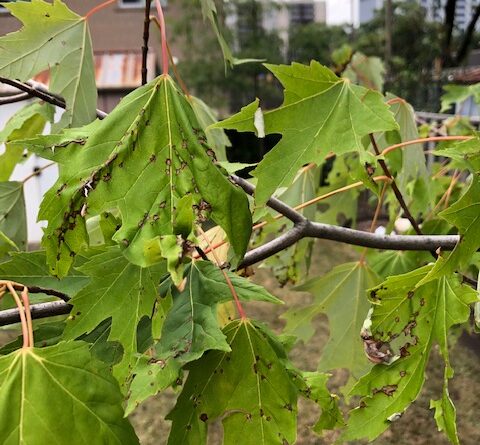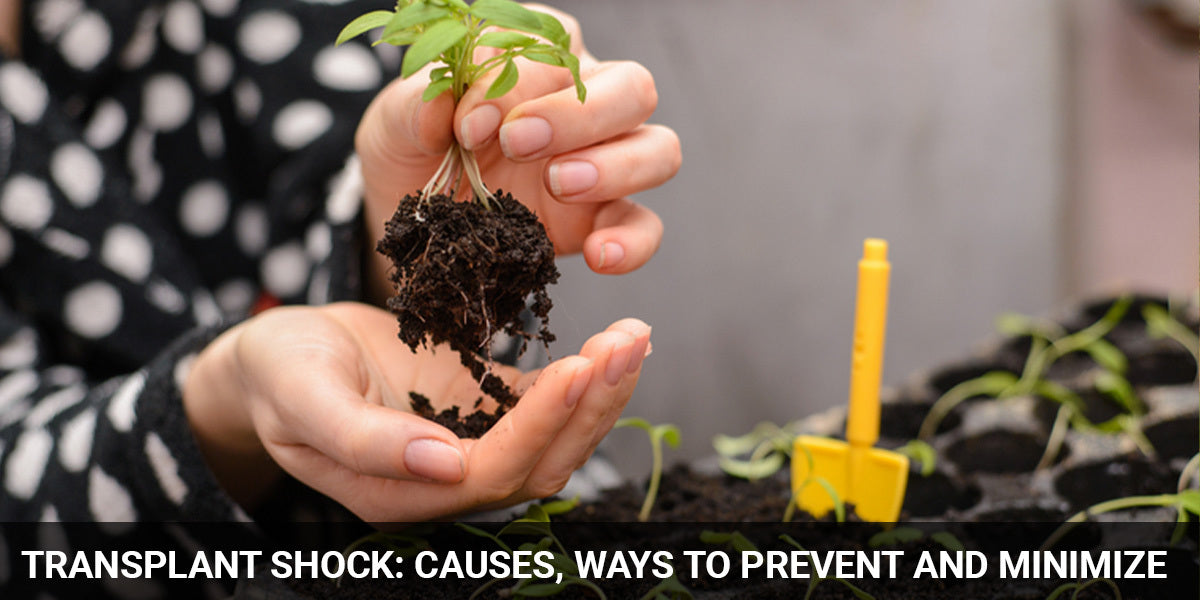
Tree transplant shock recovery can be achieved by providing proper care and maintenance to the transplanted tree.
Signs Of Tree Transplant Shock
Signs of tree transplant shock include wilting leaves, discolored foliage, leaf drop, and stunted growth. When a tree is transplanted, it can undergo stress and experience these symptoms as it adjusts to its new environment.
Wilting leaves are a common sign of transplant shock, as the tree may struggle to take up enough water to support its foliage. Discolored foliage, such as yellow or brown leaves, can also indicate transplant stress. In some cases, the tree may even shed its leaves as a response to the shock it has experienced. Additionally, stunted growth may occur as the tree focuses its energy on recovering rather than growing.
Factors Contributing To Tree Transplant Shock
Tree transplant shock recovery
Factors contributing to tree transplant shock include improper handling during transportation, incorrect planting techniques, seasonal changes in weather, and soil conditions and pH levels. When trees are not handled with care during transportation, they can experience stress and shock, impacting their overall health and survival.
It is important to ensure that proper techniques are followed when planting a tree to minimize the risk of transplant shock. This includes digging an appropriate planting hole, avoiding damage to the tree’s roots, and providing adequate water and nutrients. Additionally, seasonal changes in weather can also contribute to transplant shock, particularly if the tree is moved during extreme heat or cold.
Finally, soil conditions and pH levels play a crucial role in the tree’s ability to recover from transplant shock. It is important to ensure that the soil is well-drained and has the proper pH level to support healthy root growth.
Preparing Trees For Transplantation
Transplanting a tree can be challenging and requires careful preparation and attention to detail. Following proper techniques can minimize the shock and ensure the tree’s healthy recovery. Here are some key steps to consider:
Choosing The Right Time For Transplanting
The timing of tree transplantation plays a crucial role in its survival. It is best to transplant trees during their dormancy period in late winter or early spring. During this time, the tree is less likely to experience stress and can establish its roots before facing harsh weather conditions.
Pruning And Trimming Techniques
Pruning and trimming the tree before transplantation can help reduce stress and promote its overall health. Selective pruning of dead and damaged branches, as well as thinning out dense foliage, can improve the tree’s structure and encourage proper growth.
Watering And Fertilization Guidelines
Watering the tree thoroughly a day or two before transplantation can prevent excessive water loss during the process. Proper hydration is essential for the tree’s survival. However, avoid overwatering to prevent root rot. Applying a slow-release fertilizer a few weeks before transplantation can also provide necessary nutrients for the tree.
Assessing Soil Quality And Ph.D. Levels
The condition of the soil is crucial for the tree’s long-term survival. Conduct a soil test to determine the pH levels and ensure optimal conditions for the tree’s roots. Adding organic matter, such as compost, can improve soil fertility and drainage, aiding in the tree’s establishment after transplantation.

Credit: www.trustbasket.com
Minimizing Transplant Shock During The Process
Tree transplant shock can have a significant impact on the survival and overall health of a transplanted tree. Minimizing transplant shock is crucial for ensuring successful recovery during the transplant process. One of the key factors in minimizing shock is properly digging and preparing the root ball. Careful excavation and the size of the root ball are important to preserve the tree’s root system and minimize damage.
Implementing correct planting techniques is another critical step. This includes ensuring the correct planting depth and backfilling the hole properly. Adequate watering and drainage are also essential to help the tree establish itself in its new location. Regular monitoring for pests and diseases is equally important, as stress from transplanting can weaken the tree’s defenses and make it more susceptible.
By following these steps and taking proper care, tree transplant shock can be minimized, allowing the transplanted tree to recover successfully and thrive in its new environment.
Post-transplant Care And Recovery
Watering frequency and amount
To ensure tree transplant shock recovery, proper watering is crucial. The frequency and amount of water required will largely depend on several factors, such as the tree species, size, and weather conditions.
Generally, it is recommended to water newly transplanted trees deeply and less frequently, allowing the soil to dry out slightly between waterings. This encourages the development of deep roots, ensuring better stability and resilience. However, it is essential to monitor the moisture level of the surrounding soil and adjust the watering schedule accordingly.
Mulching and protection against extreme temperatures
Mulching around the tree’s base can help retain moisture, regulate soil temperature, and suppress weed growth. When applying mulch, leave a gap around the trunk to prevent moisture buildup and potential rot.
Additionally, protect the tree from extreme temperatures by using protective covers or wrapping the trunk with burlap during winter months to minimize damage caused by freezing temperatures.
Monitoring for signs of stress and adjusting care accordingly
Regularly inspect the tree for signs of stress, such as wilting leaves, discoloration, or pest infestations. Adjust the care regimen accordingly, providing additional water or modifying mulch as required. Timely intervention can prevent further damage and aid in the rapid recovery of the transplanted tree.
Supplemental feeding and fertilization guidelines
While the initial water and nutrients in the transplant hole are often sufficient, providing supplemental feeding and fertilization may be necessary.
Consult with a horticulturist or arborist to determine the specific nutritional requirements of the tree. Avoid over-fertilization, as it can cause burn and stress to the tree. Use slow-release fertilizers and follow the recommended application rates to facilitate healthy growth and recovery.
Promoting Tree Health And Growth Post-recovery
When a tree goes through a transplant shock, promoting its health and growth post-recovery is crucial. Regular pruning and trimming practices are essential in maintaining the tree’s overall well-being. The tree can focus its energy on new growth and healing by removing dead or damaged branches.
Implementing proper fertilization schedules is also vital for supporting the tree’s nutritional needs. Providing the right balance of nutrients will help it recover faster and become more resistant to diseases and pests.
Protecting the tree against pests and diseases is another important aspect of promoting its health. Regular inspection and timely treatment can prevent infestations and infections from causing further harm.
Monitoring and adjusting care based on tree growth and health is equally significant. Periodic evaluations can help identify any issues or deficiencies and allow for appropriate adjustments in watering, fertilization, and other care practices.
Overall, a comprehensive approach that includes regular pruning, proper fertilization, pest and disease protection, and careful monitoring is key to ensuring the full recovery and growth of a tree after transplant shock.
Frequently Asked Questions Of Tree Transplant Shock Recovery
How Long Does It Take For A Transplanted Tree To Recover From Shock?
The recovery time for a tree after transplant shock varies depending on factors such as tree species, size, and growing conditions. Generally, it can take anywhere from a few months to a year for a transplanted tree to fully recover and establish new roots.
What Are The Signs Of Tree Transplant Shock?
Signs of tree transplant shock include wilting or discolored leaves, slow or stunted growth, root damage, and increased susceptibility to pests and diseases. It’s important to address these signs promptly to improve the tree’s chances of recovery.
How Can I Help My Transplanted Tree Recover From Shock?
To aid in recovering a transplanted tree, ensure proper watering by providing adequate hydration without overdoing it. Mulching can also help retain moisture and regulate soil temperature. Additionally, it’s essential to monitor the tree’s health, address any issues promptly, and provide appropriate care to facilitate recovery.
Can A Tree Die From Transplant Shock?
While transplant shock can be stressful for a tree, it doesn’t always lead to death. Following proper care techniques and providing the necessary support can significantly increase the chances of a transplanted tree surviving and recovering from shock.
Conclusion
Proper care and attention are essential to successfully recover from tree transplant shock. Following the tips and strategies outlined in this blog post, such as watering the tree regularly, providing adequate sunlight, and monitoring for signs of stress, can help ensure a smooth recovery process.
Remember, patience is key as the tree takes time to establish its roots in its new environment. With dedication and care, you can encourage the tree to thrive and flourish in its new home.




